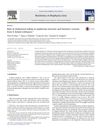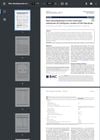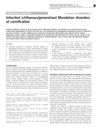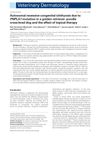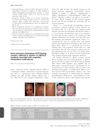Cellular and Metabolic Basis for the Ichthyotic Phenotype in NIPAL4 (Ichthyin)–Deficient Canines
March 2018
in “
American Journal Of Pathology
”
TLDR Mutations in NIPAL4 cause skin issues by disrupting lipid layers, but some improvement is seen with topical treatment.
The study on NIPAL4 (Ichthyin)-deficient canines revealed that the absence of NIPAL4 led to significant disruptions in lipid metabolism and skin barrier function, resulting in the characteristic scaling and thickening of the skin observed in ichthyosis. Key findings included increased transepidermal water loss, reduced stratum corneum hydration, and impaired lipid secretion. The deficiency caused cytotoxicity, characterized by stripped membranes and abnormal lamellar body structures. Topical ω-O-acylceramides partially restored the corneocyte lipid envelope and cornified envelopes but did not fully correct the clinical phenotype due to persistent cytotoxicity. The study highlighted the role of NIPAL4 in lipid synthesis and barrier function, with implications for understanding and treating autosomal recessive congenital ichthyoses.
